
Circle The Wagons: with Mick Harvey & Matt Linesch
Wagons are a great live band, but studios haven’t always felt like home. So Henry Wagons bought a holiday house, called Mick Harvey and laid a sonic foundation in the spirit of the ’70s. Acid Rain & Sugar Cane is a live, spill-laden record, mixed by a long-lost brother from across at Ocean Way.
Session photos: Michael Christian
Henry Wagons wears his heart on his gold chain. The lounge room of his holiday house-cum-recording studio is dressed in shag pile, Harry Nilsson plays on the boombox and an Elvis Presley photo book makes for an impromptu mousepad.
Henry has been steadily building up his recording environment based on how he imagines the kings of the ’60s and ’70s did it: Live, plenty of dynamic and ribbon mics, and recognising spill can be an asset. Which is why he bought this joint.
The alt-country performer has managed to procure himself a double-storey getaway in the Eastern hills with a divine view overlooking Port Phillip Bay. It’s in holiday house territory, but for Henry, it’s the perfect place to get some work done.
IN HOUSE STUDIO
Henry recorded his band Wagons’ latest album Acid Rain & Sugar Cane here. Before that, Henry had released a ‘solo’ record of duets Expecting Company?; an album he recorded all the instrumentals for by himself. It was an experience he enjoyed, but the solitary effort made him more eager than ever to get the band back together. This time though, he felt a traditional studio wasn’t going to cut it. “I always feel I’ve had to battle a disconnect in tracking environments,” explained Henry. “If people want to talk in the control room then someone needs to press a talkback button. Your bass player can’t just get on top of the console to control his own monitor mix.”
But he had an idea of what might work. “I saw this documentary of The Who recording,” said Henry. “All of them in one room with not a headphone in sight, and Roger Daltrey was coming through a PA in the room. I wanted to see if it was possible. Not only because a lot of the songs I was writing were leaning towards ’70s rock, and communication would be perfect, but also, maybe part of the secret of those ’70s bands sounding so powerful, so immediate, is because of a little spill in the room.”
Wagons decided to test his theory with a few stress-free live demos at his house. The main living area is split level, which provides some natural separation. Up top, overlooking the lounge would be the bass amp and keyboards. At one end of the downstairs area would be the drums, surrounded by a mix of wood panelling, glass and a stone fireplace, with the guitars on the other side of a buffer of sofas. Henry drove the sessions from behind his mixer, singing into an Electro-Voice RE-20 he routed out through a PA, with one speaker pointing at him and the other out into the room.
“Sometimes I’d feed a click through a headphone to the drummer, but he’d be the only one wearing headphones,” said Henry. “I can do a headphone setup here, but headphones were the enemy in that session.”
Sure enough, his hunch paid off. Everyone could manipulate their own levels — if the bass player wanted to turn up, he just did it, and let Henry know — and, with the help of a bit of shag pile, the natural acoustics of the hillside house’s internal architecture were as studio-like as he could have hoped.
After that, it was no question the rest of the album would be recorded in a similar fashion.
VINTAGE SETUP
The success of the process hinged on getting conditions just right. Enough beer in the fridge, easy feedback, a great view — all of it contributed. The other half was his gear. His collection of mics and preamps are all handpicked to put him in the ballpark of vintage ’70s sound without having to try too hard. Leaving him free to drink and ramble on with everyone else instead of finicking with every mic angle between takes.
Lately he’s been collecting Elvis audio memorabilia; specifically RE-15s, the same vocal mics The King used on stage in Vegas. Long, skinny grey things with odd grooves in the handle that would also pop up on Harry Nilsson TV specials and Neil Young live concert DVDs.
Henry’s collection of Electro-Voice mics doesn’t stop at the RE-15 and RE-20. One of his favourites is ‘The Buchanan Hammer’ EV 635A omnidirectional dynamic, famous for its toughness. Henry dangled it over the front of the Fender Reverb Deluxe, saying, “There’s no proximity effect. It’s almost got a high and a low pass on it, and brackets the cab in this immediately recognisable vintage ’70s way.” Sometimes he used a Heil PR30, a cardioid dynamic, for its “brutal accuracy”.
Other pieces Henry keeps in his furry toolbag are a 12-channel Sound Workshop Series 20 console he picked up from the ABC’s children’s programming department. “Apparently they only used channels one and two, and then 11 and 12 had tape returns on them. As soon as I fed the kit through here, it sounded like Superstitious!” He always runs the drums through those preamps, using the combination of preamp gain, trim and fader output level to drive the channel, and provide a bit of transient shaping. There are a few neater pieces, like an Avalon 737 for bass, a Focusrite Platinum Twin Trak Pro for vocals and keys, and an API 500 series lunchbox filled with two AMS Neve 1073 lunchbox preamps that let the mids punch on guitars, a Great River MP-500NV for a little more transparency than the Neves, a super clean Millennia Audio HV-35 preamp he used for vocals, and a Lindell Audio 6X-500 preamp and 2-band EQ that came in handy for shaping a few sources on the way in.
He also has an Advanced Audio tube U47 copy, which fits snugly into the palette. He recorded an a cappella group, influenced by the Andrews Sisters, with just the mic in an omni configuration, and a couple of room mics. The result was perfect for the ’40s vibe, and again showcased the flexibility of the space. He also bought a couple of Advanced Audio pencil condensers in the mould of the AKG C451 to alternate with the EV 635A for overheads.
“Because of the equipment I have, I find I don’t have to fiddle around too much to pull the sounds I want,” said Henry. “The digital age is only now just catching up with an influx of analogue saturation plug-ins, desk simulations and tape emulations. They’re finally figuring out all of the songs we loved from back in the day went through so many stages of analogue saturation. Every single mix was tracked through a desk, to tape, back through another console, through its master bus, back to tape. In-the-box mixes don’t naturally have any of that. You can essentially record transparently without screwing with the sound in that amazing harmonic way. I feel like we’re grappling, clutching at straws, in this digital world. So I’ve become less and less afraid to imprint preamp drive, saturation and compression on the way in.”
Henry uses Reaper as his DAW, with RME converters. He’s working on PC and loves the rock solid nature of Reaper: “The CPU load is really low, the compression and convolution reverb that it comes with is amazing. It’s incredibly transparent, functional and solid… and the whole program is 10MB. It’s just an insanely efficient and beautiful piece of software. I also love that it’s the same guy who invented WinAmp, which is another old school thing.”


MOLLY CODDLING
Henry put in a bit of behind the scenes work each session to make sure everyone else felt fully laid back. “Molly-coddling” them, he called it. He’s recorded in enough studios over the last 12 years to know that time wasted “dicking around” comprises performances. So he always tried to pull a basic tone from all the instruments before anyone arrived. Then he’d “dose people up on a combination of Baileys and coffee for a daytime downer and upper at the same time, in the spirit of Elvis Presley. Loosen them up and shove them in front of an instrument.” But beyond that, it was a team effort. The drummer kept an eye out for droopy under snare mics, and everyone else kept tabs on their own gear.
“One of the secrets to recording in here,” said Henry. “Is it requires an understanding from the whole band about the equipment they use. A big part of it is not to have a Slash-esque guitarist insist on playing through Marshall stacks. Some of the biggest, most epic guitar sounds from The Rolling Stones to Queens of the Stone Age come from 4W valve amps driven hard.” The two amps that got most action were a Vox VT20+, with too much “digital bullshit” that Henry duly bypassed, and a modded Fender Tweed Pro Junior.
Once Henry had figured out the sounds he wanted, he also recorded with plug-ins on: “It was real important to me to be able to press play the minute we’d stopped recording and have some sense of a mix. There was that immediate morale boost and satisfaction of the vocal compressed a bit with some reverb, the guitars had a little bit of help, the kick pedal was already thumping. It had a sense of power to it which created excitement.”
SEEDING GOOD IDEAS
Because Henry already owned the ‘studio’ and all the gear, the band was able to spend any advance on hiring “amazing people” they all revered. There wasn’t much labour in the decision; Mick Harvey from The Bad Seeds, who’s weaved his magic behind the scenes for Nick Cave and PJ Harvey among others, slotted perfectly into the group as co-producer/multi-instrumentalist.
The sessions went for months, working mainly around a schedule of weekends where everyone including Harvey would converge on the house, instruments in hand, get a little drunk, tell a few stories (mostly the boys picking through Harvey’s back catalogue), and when the feeling was right, hit record. It was Wagon’s version of Bob Dylan and The Band’s The Basement Tapes: “A double album of them getting shit-faced together and pressing record.”
Other than being a great producer who brought a wealth of experience and individual talent, just his presence was an automatic lift. “We were slightly in awe of and always trying to lift our game for Mick,” said Henry. “Mick wasn’t a producer in what I imagine is the traditional sense, where he’s behind a desk in the control room. Mick feels he can most contribute on a production level by being there at the inception of the song.
“He’s an amazing multi-instrumentalist. He played something on every song, drums on a couple, guitar on a few, and a lot of keys.
“I more or less had the verses and choruses written, but in terms of structuring the songs he was an important part of the conversation. And it was great to have someone you could ask, ‘What’s your take on keeping guide vocals?’ He’d follow up with, ‘Well, who are you talking about? Nick? Polly?’ And I’m like, ‘What names to drop! I’ll take either one!’
“It was great to have that weight of experience. We thought we were old hands at this, but he’s been around the traps.”
BROTHERS ACROSS THE OCEAN WAY
Engineering your own record is one thing, but mixing it as well is often one step too far for the same pair of ears. You tend to go one of two ways when balancing your own instrument; egomaniacally pump up the volume, or hide it behind a wash of other instruments and reverb. It’s a personality test that Henry falls on either side of. On the one had, he usually mixes his vocal too loud, and his guitar too soft. This time, he let Matt Linesch take over.
Linesch is probably best known for his work on the last couple of Edward Sharpe & The Magnetic Zeros albums, so he wasn’t afraid of spill or bold statements. “A lot of the way I work is live with no click, so it’s natural for me,” said Linesch. “Both records I’ve done with Edward Sharpe & the Magnetic Zeros were all live with a few overdubs.”
Linesch had recently moved into a studio at Ocean Way where he has a hybrid digital and analogue system comprising a ProTools HD rig, and a Trident Series 80 24-channel analogue console with plenty of outboard including an EMT 140 plate reverb. He typically starts in-the-box, then after getting through a couple of songs, and committing to a direction, he’ll dust off his Pultecs, outboard compression and plate reverb as inserts on the Trident, printing things down for ease of recall.
His process and experience matched Henry’s ’70s sandbox approach and dynamic mic collection to a ‘t’. “There’s an interesting element that happens when you use dynamic and ribbon mics that doesn’t happen as much with condensers,” said Linesch. “Don’t get me wrong, condensers can make for amazing mics and I use them all the time. But they tend to have boosts in the high end and a hi-fidelity type sound. All that data is still there with dynamic and ribbon mics, you just have to know how to manipulate it.
“When I’m working on Edward Sharpe records, we don’t wait till the end to manipulate things. If we want something to sound like it’s coming out of a megaphone, we’ll go get a megaphone and record it with some crummy mic.
I’m not very conservative. If you listen to old Hendrix albums, on some of those songs all the drums are coming out of one channel. I use a Nagra to create slap backs, and sometimes I’ll make all my reverb come out the left channel or I’ll make my bass come just out of the right channel. Very often I close my eyes, put my hands on a piece of gear and just turn things until I like how it sounds. And that lets me go purely from instinct.”
Maybe part of the secret of those ’70s bands sounding so powerful, so immediate, is because of a little spill in the room
CLOSE UP
In fact, closing his eyes was the first thing Linesch did when he got Henry’s record. The first thing he does with every record is sit back and soak in the energy and feeling of the songs to see how he can enhance it, then he has in-depth conversations about what the song means.
“The reason I would do that,” said Linesch. “Is because I know how to make a drum kit and instruments sound good. But I like to have a philosophy of being fearless, and make broad brush strokes. If I have a grasp on the feeling of the song and the message he’s trying to get across, I can embody that and then I can take risks mixing-wise that will still support his feelings. A lot of people forget that mixing is a hugely creative stage of the process and at that point you can take a song in many different directions.
“If Henry tells me a song is supposed to be dark and from a place not of anger, but angst, I can mix it in an aggressive way that makes someone feel that angst. And then a song like Beer Barrel is an easy, silly song — let’s not get too heavy, and have a beer and fun with our friends. The mix lets the song wash over you. Just sit back, let your foot tap along and not be too intense about it.”
Linesch knew it wasn’t going to be difficult getting into Henry’s head from the first time they clapped eyes on each other on Skype — it was like they were long-distance brothers. “We laughed when we saw each other,” said Linesch. “Because we both have glasses, hats, big hair and jewellery, we felt comfortable right off the bat.”
“We were kind of like doppelgängers,” agreed Henry. “This mystery man who mixes Edward Sharpe stuff, looked exactly like me and had very similar sensibilities about music.”
Henry sent mostly raw tracks through, except for the odd re-amped guitar and a vocal reverb on the verse of Caroline he’d become attached to. And Linesch got to work with some broad brush strokes.
“I like to start with three options for panning — left, centre or right,” began Linesch. “Obviously that can’t work all the time, but that’s how I start out. I might have a lead vocal down the centre and then a slap at 15ips or 30ips panned hard right. Then I’ll trigger a reverb off the slap and pan it hard left. Or if I have a lead guitar, I might put a pre-delay on a reverb and pan it hard right so it creates movement. Even though the lead guitar is coming out hard left, it’s moving the sound across your speakers. It creates excitement for the listener’s ear and widens the image.
“Sometimes putting background vocals all in one side and then having reverb on the other opens up the mix. Some songs on Henry’s record have plenty of vibe going on, plenty of room, so why not put all the reverb in one side and clean it up a little bit?
“Sometimes I might move a reverb to create depth at a certain key moment. And I’m also pretty habitual about riding EQ and compression throughout the song. So maybe through a verse, a piano part could have more high frequencies and when the chorus hits I might bump up some lows or low-mids and create some depth to it. Or at that moment manipulate my reverb, or trigger a delay, just enough to feel it.
“By doing that you can guide your listener through an experience. That’s what mixing is, guiding your listener through an experience. And more than anything, recreating an experience that a person may have if they were sitting in a room with Henry while he was playing a song. That’s a very difficult thing to do because most of the time people are listening through little ear buds through their smartphone. So you have to get creative and do things like ride EQs and compression, use your reverbs, delays, and slaps in a way that’s not stagnant throughout a song, but ever moving and ever changing.”
SPILLING THE BEANS
Linesch loves spill, precisely because it naturally does what he’s trying to re-manufacture in his mix — bring life to a record. He’s aware of the phasing issues it can cause, and sometimes he’ll gate or cut it out. But for the most part, his treatment is a simple case of finding the key frequencies of that instrument, and notching out other areas where there might be spill. Or if he’s compressing something that has a lot of bleed, he’ll give it a fast release so the bleed is not sitting up after the initial attack of the instrument.
He also mixes with as little soloing as possible. While an instrument might sound “gnarly” on its own. He often finds it will sit fine in the mix. Also, when you’re mixing tracks with lots of bleed, you’re not going to hear any phasing issues by soloing individual instruments.
Sometimes spill is exactly what the doctor ordered. And on one song, there’s no way he could have replicated the mix any other way than let the spill shine through. “At the end of Never Gone everything cuts out,” said Linesch. “There’s just his vocal with very minimal snare and a little bit of piano. There’s a delay that occurs on the snare whenever it hits… pop-pop-pop-pop, and that’s all just bleed from his mic. I actually muted the drums at that point and compressed his vocal a little bit more. The sounds you hear are just coming from the vocal delay affecting the bleed. It was great.”


CLOSING IN ON DRUMS
The rest of the drums on the album weren’t as ambient. Drum sounds are something Linesch prides himself on, which has a lot to do with his mentor, Ross Hogarth. Hogarth was hired to record drums a lot, and Linesch shadowed him all around LA, everything from the Doobie Brothers to Don Henley, and the last Van Halen record.
“If I get my drum kit into a place where it’s a beautiful kick/snare sound, typically I bring my kick above my snare, and bring in a parallel chain with heavy compression or use a distortion plug-in like Soundtoys’ Decapitator in conjunction with a compressor and an EQ,” said Linesch. “I find through the use of distortion I can create a cool three-dimensional image. It’s also why I continue to use my Trident Series 80 console because it has a sweet spot to it. If you push that console ever so slightly to the edge there’s a saturation that feels like a dimension I can almost reach out and grab.
“That’s why I use the Decapitator in conjunction with compression and EQ, because then I can really grab the frequencies or sound that’s adding that extra thump to the kick drum, or extra pop to the snare, that ever so slightly breaks it through the song. You have to be careful. If you put your overheads or hi-hat through the parallel chain, you might get yourself into a situation where it’s sounding really shrill. There have been times I’ve automated a little bit of the overheads to kick in, but it can get really bright, really fast.
“I’m always rolling out the low end from the overheads. Sometimes I’ll push a little bit of mids to high-mids because they might have data that is really crucial on bringing out elements I like of the toms, kick, or even snare sometimes. But to me the highs are where the money is at for overheads because that gives me the beauty of the cymbals and the crashes and it will also support the crack of the snare and attack of the toms.
“I’ll edit or gate my tom tracks so that just the toms are coming through, and put them through that treatment too. I’m a huge fan of upfront toms that cut right through whatever is going on.”
TAKING TO SATURATION
Henry recorded most of his vocal takes live, and even though the RE-20 had the best rejection zones of any of his mics, it still caught plenty of spill. On the takes he overdubbed, Henry had to match the vocals spill in the drum overheads. But, he said, as long as he “had the same meter and general phrase it was never an issue. There are a couple of moments on the album where there’s a slight divergence or I didn’t grunt or hold a note for as long. But I think it adds to the trippy-ness of the album having strange little ghosts appear from the right and left because they’re in the overheads.”
Overall, Henry was surprised by the amount of clinical post-production he could achieve. Even drums that needed to be straightened played along just fine. Bass parts fixed, guitar parts floated. He never found any ghosting to be unpleasant.
Because Linesch was dealing mostly with single live vocal takes, with only a couple of doubles, he would sometimes engineer a simple slap by duplicating the track and offsetting it in time. “Sometimes I’ll use one of my tape machines to create a slap, or a plug-in,” said Linesch. “But a couple of times on Henry’s record I used this method because it would allow me to really hone in exactly where and how much of a slap I’d like. And I’d trigger my reverbs and delays off that. Most of the time I kept it pretty low, or I’d mute the slap in different places and bring it in at others.
“The content of his voice is really exciting and I really wanted to bring that out with the Sta-level compressor and saturation, either with the Trident console or Soundtoys Decapitator plug-in.
“There are a couple different ways to do it on the console. I might push it with the line in. Sometimes I push it going from the channel back out from the bus, and the distortion is a little bit different. It’s very subtle, saturation more than distortion.
“When you’re recording a distorted guitar, unless you have the ability and time to really dial it in, listen to it, think back and try it again, sometimes it’s just a distorted guitar. But when you’re mixing, the subtleties count for what is captivating.
“When saturating an electric guitar that’s already distorted, it’s more for the sake of bringing out an element of that instrument. The bite to that part to make it cut through a mix, but also something that people say, ‘damn that sounds good!’
“The Culture Vulture is another piece I used to add saturation to pianos, synth work, and guitars. That was the breakthrough moment for me. I had been mixing his record and had all the songs sounding good and we were all feeling pretty good about it but there was something lacking. I said, ‘I’ve got an idea, I’ll get back to you in a week.’
“I went back to all the songs and went through a process of very selectively adding saturation and distortion. I sent it over and he was ecstatic about it. Each album I have a breakthrough moment and that was it.
And through it all, Henry found the key to those great albums. It wasn’t just one great song, one piece of gear, one extra set of ears, or a comfortable room with a well-stocked bar. From head to toe, everyone involved not only embraced the live process, but enhanced it. Henry laid the foundation, the band played along, Mick Harvey brought a wealth of experience, and Linesch saturated it with a lot of extra colour.








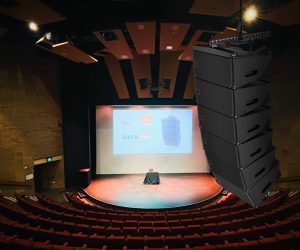
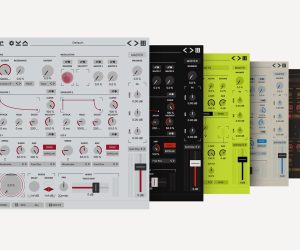
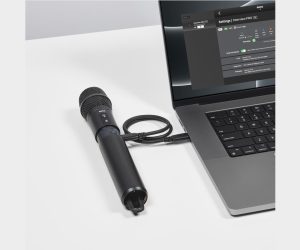
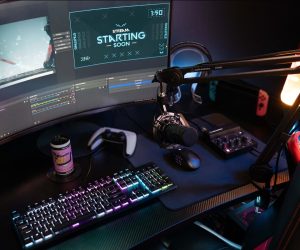
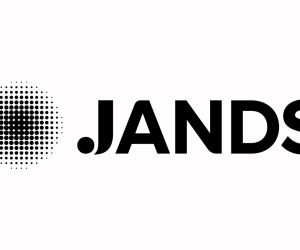
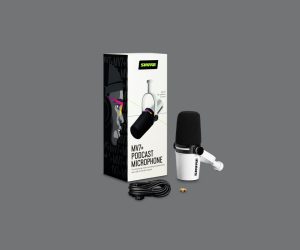


RESPONSES